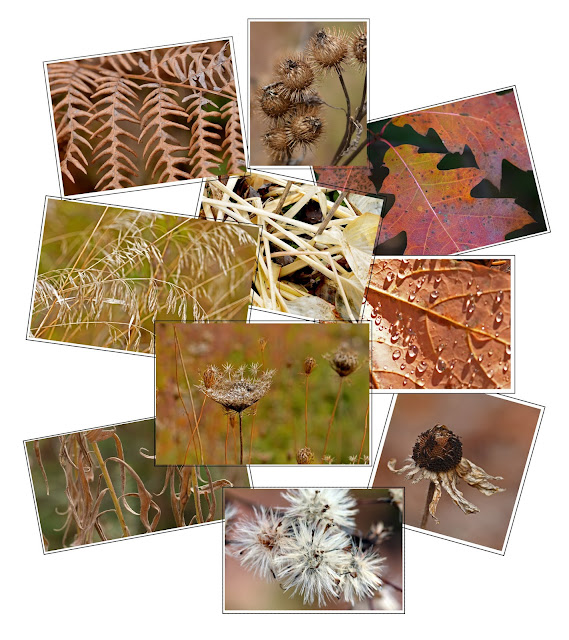Bright sunny days are all very well, but I think you notice things more on a damp and cloudy one. Yesterday I was putting a few last things away in the shed and happened to go by a small shrub that lives under the Japanese Lilac. I don't usually pay much attention to it but this time the yellow leaves caught my eye. Not their bright yellow although that was nice enough, but the 'lines' made by the leaves, especially those at the tops of the stems. I'm not sure what the shrub is - it could be a kind of flowering almond - mostly it's just a short slightly spreading shrub with plain green leaves and small puffs of pink flowers for about fifteen minutes in the Spring.
I liked the curves of the leaves and the way they sprang away from the stems. Repeated as they were on the multiple stems they had a rather nice rhythm to them.
That got me looking at other interesting 'lines' in the garden. How often do we look at the colour of something, or the shape, while not noticing what interesting lines it has? Look at all the lines in this collage of some things you might find in a late Fall garden:
Graceful curves in the grasses... bold veins on leaves... crisp curled leaves on Goldenrod stems... repeated zigzag edges of Bracken fronds... sinuous curves of the edges of Oak leaves. Even the collapsed stems of a Hosta was interesting when I looked at the lines.
.Of course there are lots of colours too: many, many, browns from palest tan to darkest chesnut, with a an excursion or two into red or yellow. But it was all the different 'lines' that intrigued me and made me look at my garden in a slightly new way.



Even in brown November plants can be interesting. I supposed the bright colours of summer can distract us from the structural lines of the plants. The pretty yellow leaves of the shrub look like they are dancing in the air.
ReplyDeleteWhat a nice way of putting it, 'dancing in the air'! Thank you, Jenny.
ReplyDelete